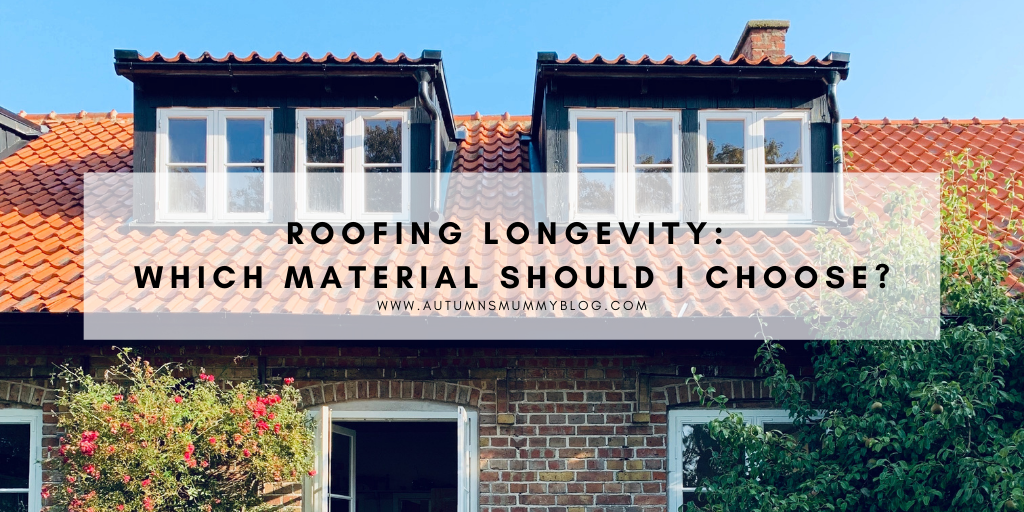Collaborative Post¦ How long your roof may last will very much be determined by your choice of material. All the typical materials used for roofing withstand the elements, it is just a case of how long for. The initial cost of the material can be proportional to how long it will last. A more expensive material will be more cost-effective long term, but then, we all have an immediate budget that we must keep to. It is worth consulting a roofing contractor to discuss pricing when considering your budget. A quick search for roofing services chicago IL, or wherever you are located, will put you in contact with the right professionals who can provide you with cost estimates and expert advice.
So, this article will consider the alternatives and how long each type of material will likely last in a typical roofing situation.
Asphalt Composition Shingles
This is the budget option for roofing. Asphalt shingles are cheaper to buy and easier to fit so cost less money than other roofing materials. They will last for between 15 and 30 years. They are the most common type of roofing that is sold because of their affordability.
When couples decide that they will not stay at a property for as long as a generation, this can be the option that means more money is available to spend on their families that will then only outgrow the property. In the meantime, though, everyone wants a roof over their head that will protect their loved ones and their contents from elements. We cannot ignore a leaking roof as it will invariably cause more damage from neglecting it. Search for austin roof repair, or change the search to your local area to get the work done so you don’t end up having to pay more in the long term!
Green Roofs
A green roof will last for 40 to 50 years and benefit the environment. During its life, it will attract low layers of vegetation of between 80 and 100mm. This includes grass, moss, and small flowers. If using sedum blankets, you will require an additional growing medium, but that can be something shallow.
Clay Tiles
Clay tiles have an aesthetic appeal and, despite costing more than a material such as shingles, will last for around 60 years. They are popular because of their look and their durability. Many tile manufacturers will guarantee their tiles for 30 years but they should last twice that number of years.
Another reason for the popularity of clay tiles is that they are a natural material. Terracotta provides a pleasing colour for a roof. Also, clay has a good track record when it comes to roof insulation. It will keep a house warmer in colder months and cooler during the summer months. It is a universal insulator in that respect.
Clay is around twenty percent more expensive than concrete but has a greater variety of applications that it can be used for. So, this contributes to its popularity as a roofing material for discerning homeowners. Concrete is only suitable for a roof structure that has a high degree of reinforcement. It has its limitations in comparison to clay.
If you are having your roof last for this length of time, you want it to be effective and have a pleasing look, and clay satisfies both those requirements to justify its higher cost.
Slate
The top of the tree, or house in terms of longevity as a roofing material, must be natural slate. It will last for between 80 and 100 years. If maintained well after installation, it can last longer still.
Slate is expensive. One of the reasons for this, like clay, is that each tile is individually fitted as opposed to a sheet of manufactured shingles that is laid. They might look reasonably realistic to what they are portraying but shingles cannot compare with the use of a natural material such as slate. It will certainly make a house more desirable should you come to sell it. A period look is sought after.
As a material, slate is completely fire resistant unlike material such as asphalt shingles. It can resist high temperatures. So, if wildfires and bushfires are a concern near you, then this is your ideal material.
Comparing the four alternatives, it is a matter of cost, as with everything. You do get what you pay for with roofing. It all depends on how much of an investment you are prepared to make in your property as to how long you can keep it watertight. Long term, we would probably all opt for slate, but if we want to have more money to spend on the family then we might sacrifice that luxury for the cheaper option of asphalt shingles. Alternatively, we could seek a happy medium and go with the natural material of slate, which may last twice as long as asphalt shingles might have done. We could, instead, be particularly environmentally friendly and go for the green roof. The choice is entirely yours, and there are professional building contractors who can help you with the decision.
